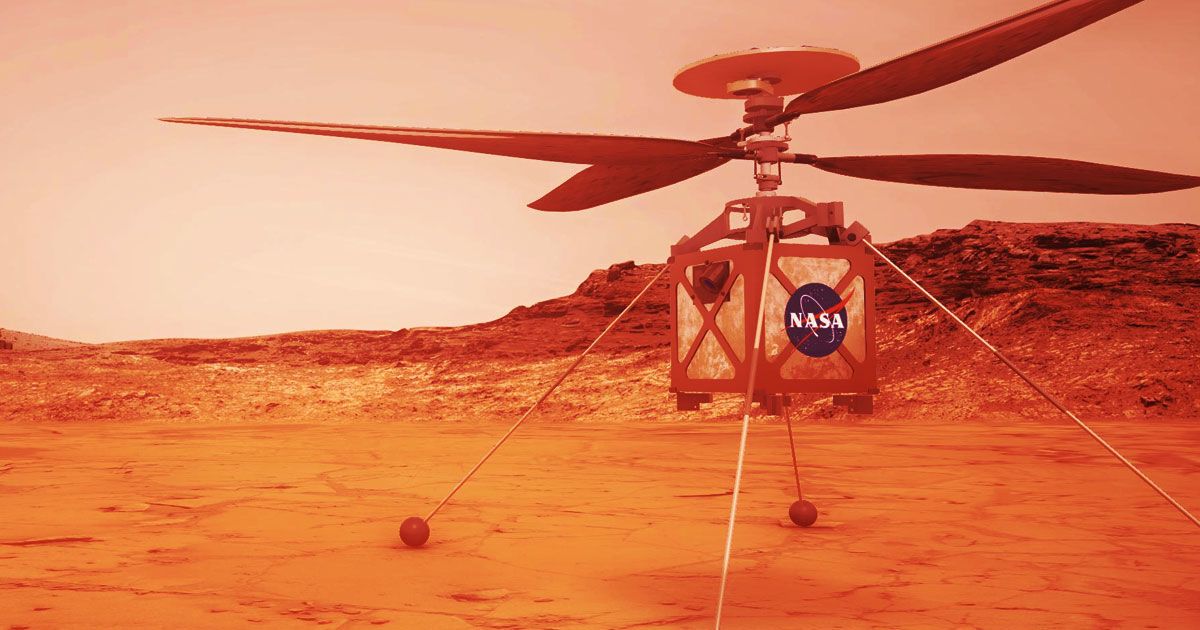


“Bob” Balaram is chief engineer.Ī key objective for Perseverance’s mission on Mars is astrobiology, including the search for signs of ancient microbial life. At JPL, MiMi Aung is the project manager and J. Lockheed Space in designed and manufactured the Mars Helicopter Delivery System.Īt NASA Headquarters, Dave Lavery is the program executive for the Ingenuity Mars Helicopter. AeroVironment Inc., Qualcomm, and SolAero also provided design assistance and major vehicle components.

NASA’s Ames Research Center in California’s Silicon Valley and NASA’s Langley Research Center in Hampton, Virginia, provided significant flight performance analysis and technical assistance during Ingenuity’s development. It is supported by NASA’s Science, Aeronautics, and Space Technology mission directorates. The Ingenuity Mars Helicopter was built by JPL, which also manages this technology demonstration project for NASA Headquarters. Now, this new operations demo gives us an opportunity to further expand our knowledge of flying machines on other planets.” We have already been able to gather all the flight performance data that we originally came here to collect. “We may get a couple more flights in over the next few weeks, and then the agency will evaluate how we’re doing. “The plan forward is to fly Ingenuity in a manner that does not reduce the pace of Perseverance science operations,” said Balaram. NASA’s Ingenuity Mars Helicopter Fifth Flight Lands in New Airfield: NASA’s Ingenuity Mars Helicopter completed its fifth flight with a one-way journey from Wright Brothers Field to a new airfield 423 feet (129 meters) to the south on May 7, 2021. The rover team’s near-term strategy doesn’t require long drives that would leave the helicopter far behind, allowing Ingenuity to continue with this operations demonstration. The agency’s fifth rover to the fourth planet is also heading south, toward a region where it will commence science operations and sample collection. Having successfully landed at its new airfield, Ingenuity will await future instructions, relayed via Perseverance, from mission controllers. This new phase will bring added risk to Ingenuity, with more one-way flights and more precision maneuvering. In a similar fashion, NASA seeks to learn more with Ingenuity how operations with next-generation helicopters could benefit future exploration of the Red Planet. The Wright brothers went on from proving powered, controlled flight was possible to attempting to better understand how the new technology could be employed. “No matter where we go from here, we will always carry with us a reminder of how much those two bicycle builders from Dayton meant to us during our pursuit of the first flight on another world.” “We bid adieu to our first Martian home, Wright Brothers Field, with grateful thanks for the support it provided to the historic first flights of a planetary rotorcraft,” said Bob Balaram, chief engineer for Ingenuity Mars Helicopter at JPL. The Ingenuity team chose the new landing site based on information gathered during the previous flight – the first “aerial scout” operation on another world – which enabled them to generate digital elevation maps indicating almost completely flat terrain with almost no obstructions. “The continuing success of Ingenuity proves the value of bringing together the strengths of diverse skill sets from across the agency to create the future, like flying an aircraft on another planet!”
#MARS QUADCOPTER FULL#
Full image and caption ›“The fifth flight of the Mars Helicopter is another great achievement for the agency,” said Bob Pearce, associate administrator for NASA’s Aeronautics Research Mission Directorate. This was the helicopter’s fifth flight, and the first time the helicopter flew to a new landing site.

Mastcam-Z Views Ingenuity After Fifth Flight: NASA’s Ingenuity Mars Helicopter’s was captured after landing on May 7, 2021, by the Mastcam-Z imager aboard the agency’s Perseverance rover.


 0 kommentar(er)
0 kommentar(er)
